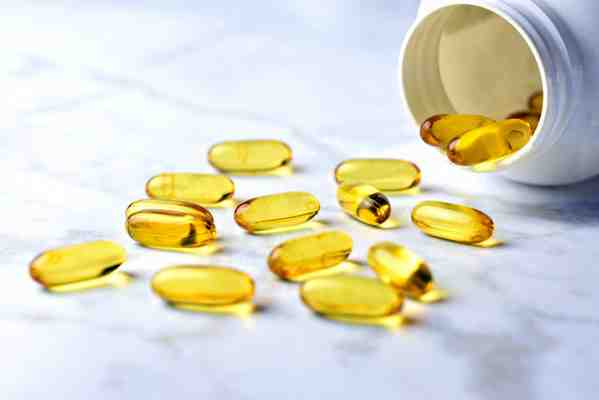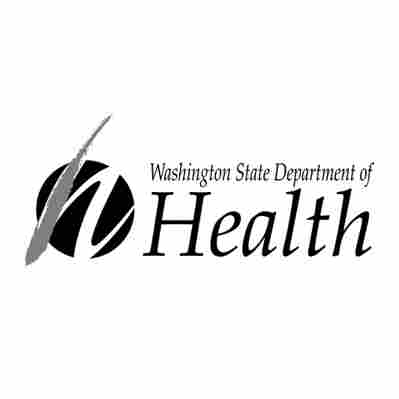Is It Safe to Take a Fish Oil Capsule With Milk?
Can I Take a Fish Oil Capsule With Milk? Image Credit: Photo by Cathy Scola/Moment/GettyImages

Fish oil capsules come in a variety of forms, some of which are more palatable than others. Drinking milk is one possible way to mask the taste and reduce the fishy aftertaste. However, you will still likely have fish oil burps. No evidence available suggests that taking fish oil with milk is harmful, but it might cause digestive issues, particularly if you have a sensitivity to the lactose found in milk. If you want to take a fish oil supplement, consult your doctor first.
Advertisement
Video of the Day
Read more: Top Fish Oil Brands
Tip Taking fish oil with milk can help mask its flavor and fishy aftertaste.
Fish Oil Benefits
The primary benefit of taking fish oil derives from the omega-3 polyunsaturated fatty acids it contains. Omega-3s are not made by the body and can only be obtained from food. According to the University of Maryland Medical Center, research has shown that when properly administered, omega-3s can help reduce inflammation, which is helpful in maintaining heart health and possibly reducing the risk of some chronic diseases. A wide variety of fish oil supplements are manufactured — some of them healthier than others in terms of purity and total omega-3 content.
Advertisement
Fish Oil With Milk
Taking fish oil can cause digestive problems, according to Healthline. Depending on your particular digestive system, symptoms could be reduced or enhanced by taking fish oil with milk. In addition, if you are unable to digest lactose — a sugar found in milk — this could further add to digestive discomfort, including symptoms of abdominal bloating, gas and diarrhea. Otherwise, unless you have a specific problem with either fish oil or milk, such as an allergy, taking the two together is not known to be harmful.
Advertisement
Fish Oil With Food
Take fish oil with food to help in the digestive process and to reduce any fishy aftertaste. If you have digestive problems when taking fish oil by itself, buying a fish oil that is higher in EPA and DHA — the types of omega-3s found in fish oils — can help. HealthLine suggests that these types of fish oils are purer than standard fish oils, which may contain more contaminants. Fish oil is also available in timed-release capsules, which could help reduce side effects.
Advertisement
Read more: Best Time to Take Fish Oil
Fish Oil Considerations
The National Institutes of Health indicates that adequate intakes for Omega-3 fatty acids are 1.1 grams for females and 1.6 grams for males. Consult your doctor before taking fish oil supplements, particularly if you are taking them for a specific problem or are taking other medication. According to fish oil can interact with blood thinners, hormone replacement drugs, birth control pills, diuretics and some cardiac medications. Quality of fish oil capsules can be compromised by prolonged exposure to heat, sunlight or air. If your capsules smell "fishy," they might be rancid and should be replaced.
If you take fish oil with milk and notice any reactions, including digestive problems or allergic-type reactions, don't take either again until you can see a doctor. Your healthcare professional can test for allergies or see if you have any other health issues that might be causing the problem.
When to take fish oil: Timing, dosages and side effects
There is no incorrect time of day to take fish oil supplements. However, some evidence suggests that people absorb omega-3 fatty acids more effectively when they take them with a meal that contains dietary fat. This comes from a study in Current Opinion in Clinical Nutrition and Metabolic Care . Fish oil is a major source of omega-3 fatty acids, which may have a number of health benefits. In this article, we will discuss when people should take fish oil, how to take it, dosage, and any health benefits and side effects.

What is the best time to take fish oil? Share on Pinterest Zbynek Pospisil/Getty Images There is no significant benefit to taking fish oil at a specific time of day. However, people may wish to take fish oil with a meal that contains dietary fat. A 2019 study on omega-3 found that taking an omega-3 concentrate with food that contains fat increased bioavailability, making it easier for the body to absorb. Additionally, an older 2015 study found that taking omega-3 fatty acids with a low fat meal reduced absorption. Both of these studies looked at omega-3 fatty acids specifically, so the results may not apply to people taking fish oil. Additionally, the amount of omega-3 in fish oil can vary, depending on factors such as the type of fish, and the brand.
How to take People can take fish oil capsules with water during a meal. If a person typically does not eat much fat at breakfast, they may wish to wait until lunch or their evening meal before taking it. Some people experience gastrointestinal side effects when taking fish oil. If a person experiences this side effect, they may find it helpful to split their fish oil into two doses and take them at different times of the day. People who split their dose in half may need to take each one at different mealtimes.
Dosage Researchers have found it difficult to define an optimal amount of omega-3 fatty acids to get per day. The American Heart Association (AHA) recommend adults take between 500–1,000 milligrams of omega-3 per day. However, other countries and organizations recommend different doses. The Office of Dietary Supplements (ODS) note that while some types of omega-3 have no official recommended dose, alpha-linolenic acid (ALA) is an exception. This table shows the recommended daily amounts by age and sex: Age ALA intake in grams (g) Below 12 months old 0.5 1–3 years 0.7 4–8 years 0.9 Males aged 9–13 years 1.2 Females aged 9–13 years 1.0 Males aged 14 years and over 1.6 Females aged 14 years and over 1.1 During pregnancy 1.4 During breastfeeding 1.3 The amount of ALA in omega-3 supplements can depend on the type of supplement and the manufacturer. Read the product label to determine how much a supplement contains.
Health benefits Omega-3 fatty acids may have a positive effect on human health in a number of ways. Research into its benefits is ongoing, but there is evidence that it may : lower the risk of developing Alzheimer’s disease, dementia, and other cognitive function disorders
improve the health of babies and slightly increase birth weight
reduce the risk of age-related macular degeneration, which causes vision loss
protect heart health and lower triglyceride levels
reduce the symptoms of rheumatoid arthritis However, many studies on omega-3’s health benefits focus on getting these fatty acids from fish and seafood, rather than from fish oil capsules. If a person is thinking of taking fish oil for a health condition, they should speak with a doctor first. Some specific conditions that may benefit from a higher intake of omega-3 include: Cardiovascular conditions According to a 2015 review , there is some evidence that consuming omega-3 fatty acids may help prevent or manage cardiovascular conditions. Omega-3 fatty acids may help reduce triglyceride levels in the blood and reduce the risk of cardiovascular death. Omega-3 fatty acids may also have antiarrhythmic effects, which means they help a person’s heart beat in a regular pattern. The effect that omega-3 fatty acids have on arrhythmia may significantly reduce the risk of fatal ventricular arrhythmias. However, more recent studies show that there may not be a clear benefit to taking omega-3 to prevent adverse effects of cardiovascular conditions. There is also some evidence that taking statins at the same time as omega-3 fatty acid supplements may reduce their protective effect on cardiovascular conditions. Scientists need to carry out more research on omega-3 and its relationship with preventing or managing cardiovascular diseases. Inflammatory conditions Some studies have shown that a high omega-3 intake can reduce the risk of inflammatory disease mortality. Some have also found that omega-3 fatty acids are beneficial for people with Crohn’s disease and ulcerative colitis, two types of inflammatory bowel disease. However, there is no clinically significant evidence on whether omega-3 fatty acids help prevent relapses for people with these conditions. Colon cancer Several in vitro studies show that omega-3 fatty acids have an effect on colorectal cancer stem cells (CCSC). CCSC have a long lifespan and can self-renew, leading to colon tumors. CCSC can lead to cancer relapse and chemotherapy resistance. Omega-3 fatty acids may stop CCSC from growing and may reduce chemotherapy resistance. Prostate cancer Omega-3 fatty acids may have several positive effects with regards to prostate cancer, although research on this is mixed. Several studies have found that consuming fish or omega-3 fatty acids reduces the risk of developing prostate cancer, including aggressive forms. However, other studies suggest that there is no clear benefit to consuming omega-3 fatty acids to prevent prostate cancer.
Side effects Side effects of fish oil supplements are usually mild. They include : unpleasant tastes
bad breath
headache
heartburn
nausea
diarrhea
bad-smelling sweat Additionally, omega-3 supplements can have an adverse interaction with drugs that affect blood clotting. People should contact their healthcare provider to ensure it is safe for them to take a supplement before trying it.
Farmed Salmon vs. Wild Salmon
Our goal isn't to resolve the controversy about eating farmed or wild fish but to encourage Washingtonians to eat two fish meals per week that are low in contaminants. Fish is an important part of a healthy diet and salmon is an excellent source of omega-3 fatty acids. Omega-3 fatty acids are found in every kind of fish but are especially high in fish such as salmon that store a lot of oils in their muscles. Omega-3 fatty acids reduce the risk of cardiovascular disease in adults and promote healthy vision and brain development in infants.

The controversy about eating farmed verses wild salmon is complex, and reports available in the media, online, and in scientific publications often seem contradictory. Issues fall into three main categories: environmental concerns, contamination, and omega-3 fatty acid levels in edible portions. The good news is both wild and farmed salmon have low levels of mercury, PCBs, and other contaminants.
Environmental Concerns
Transfer of Disease
The import of Atlantic salmon eggs into the Pacific for farming has raised concern about possible transfer of disease to wild stocks. Restrictions on egg importation, testing of broodstock fish from which eggs are taken, and disinfection are intended to minimize disease. The disease issue is also related to how the fish are raised – high stocking densities can worsen a disease outbreak, or in some cases can be a contributing factor.
Escapes
The potential escape and unintended introduction of Atlantic salmon from marine net pens into Puget Sound and Pacific Northwest rivers and streams is an environmental concern. While some juvenile Atlantic salmon have escaped, no known sustained runs have been documented, despite the fact that federal and state agencies attempted to establish Atlantic salmon in the Pacific Northwest for many years until the practice ceased in the 1980s.
Another concern is how escaped Atlantic salmon may interact with Pacific salmon. Atlantic and Pacific salmon belong to different genera and don't produce fertile offspring. If self-reproducing Atlantic salmon populations become established in Washington, they may compete with native fish. Adult and juvenile Atlantic salmon have been found in Pacific Northwest rivers and streams. However, successful reproduction has not been observed in Washington State waters. It isn't known if farm-raised Atlantic salmon compete against wild Pacific species for food or spawning sites. Studies have shown that escaped farmed salmon – in either the Pacific or Northwest Atlantic oceans – have a low survival rate in the wild because they are accustomed to being fed. Further, Atlantic salmon (farmed or wild) cannot successfully mate with wild Pacific salmon. Pacific salmon species are not reared in marine net pens in Washington.
Pollution
Pollution (fish excrement and uneaten feed) occurs regularly under net pens, especially if they are in a low current area. Most pens are located in areas where water currents are high. Pollution from salmon net pens may affect benthic habitat directly beneath pens, but the effect is temporary and benthic habitats recover during inactive periods.
Sea Lice
Sea lice from farmed fish may infect native salmon populations. The sea lice issue is complicated, but regulations in the United States and British Columbia require monthly monitoring of farmed salmon for sea lice and notification of authorities and treatment if sea lice numbers exceed three lice per fish.
Contamination
Today, most of the salmon available for us to eat is farmed. Early studies reported high levels of PCBs and other contaminants in farmed salmon – higher than in some species of wild salmon, such as pink salmon. Follow-up studies haven't confirmed this and the consensus among scientists and regulators is that farmed salmon and wild salmon are safe foods.
Farmed salmon available in Washington state markets is produced in Washington State, Canada, Maine, or Chile. Studies on salmon from these sources have shown low levels of organic contaminants in the fish. Strict rules on contaminant levels in feed ingredients are now in place. Changes in feed have lowered contaminant levels in these fish.
Omega-3 Fatty Acids
Omega-3 fatty acids in fish are derived from plants (algae, leaves, grass). In wild salmon, the amount and type of omega-3s found are based on the algae and plankton found in their diet. In farmed salmon, the omega-3 levels are dependent on what type of feed they eat, which is made from plants, grains, and fishmeal. Farmed salmon fillets contain as many grams of omega-3 fatty acids as wild salmon because farmed salmon are fattier than wild salmon.
New feeds are being developed with less fishmeal in them and more protein derived from grains and oilseeds, such as soybeans. Fish oil is also being partially replaced with plant-derived oils. In general, the more plant-based ingredients, the lower the level of long-chain omega-3 fats in the salmon. However, fish are fed feeds containing enough fish oil to maintain omega-3 fatty acid levels equivalent or higher than most wild fish.
Health professionals recommend that we increase our intake of omega-3 fatty acids. Omega-3 fatty acids are essential nutrients for nervous system, heart, and brain health. Fish, especially oily fish such as salmon, are a rich source of omega-3 fatty acids. Those of particular importance are alpha-linolenic acid, eicosapentaenoic acid, docosopentaenoic acid, and docosahexaenoic acid. Research has shown that eicosapentaenoic acid and docosahexaenoic acid in seafood provide health benefits for the developing fetus, infants, and also for adults. Learn more about the health benefits of omega-3 fatty acids.
Summary
Balancing the health benefits of farmed salmon with contaminant levels can be confusing. Here are a few points to keep in mind:
Keep eating salmon! Salmon is high in protein and omega-3 fatty acids that provide well documented benefits for the heart and brain. Wild salmon is a great choice and farmed salmon is a good alternative.
Women of childbearing age and young children should continue to eat fish known to be low in contaminants. See our healthy fish guide and advice for women and children.
Prepare and cook fish in ways that reduce the fat content. See our tips for reducing exposure to chemical contaminants in fish.
References
Easton MDL, Luszniak D, and E Von der Geest, 2002. Preliminary Examination of Contaminant Loadings in Farmed Salmon, Wild Salmon and Commercial Salmon Feed. Chemosphere (46) 1053-1074.
Gardner J and DL Peterson, 2003. Making Sense of the Salmon Aquaculture Debate: Analysis of Issues Related to Netcage Salmon Faming and Wild Salmon in British Columbia. Pacific Fisheries Resource Conservation Council.
Hites RA, Foran JA, Carpenter DO, Hamilton MC, Knuth BA, and SJ Schwager, 2004. Global Assessment of Organic Contaminants in Farmed Salmon. Science (303) 226- 229.
Mazurek R and M Elliott, 2004. Seafood Watch, Seafood Report: Farmed Atlantic Salmon (PDF). Monterey Bay Aquarium.
Nash CE (editor), 2001. The net-pen salmon farming Industry in the Pacific Northwest. U.S. Department of Commerce, NOAA Technical Memorandum NFMS-NWFSC-49, 125 p.
Waknitz FW, Iwamoto RN, and MS Strom, 2003. Interactions of Atlantic salmon in the Pacific Northwest. IV. Impacts on the local Ecosystems. Fisheries Research 62 (2003) 307-328.

